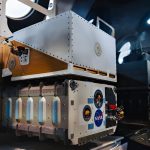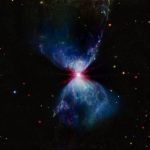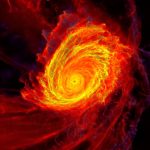Engineers send 3D printer to space for on-demand parts
Imagine a crew of astronauts on their way to Mars. About 140 million miles from Earth, they find a cracked O-ring in their spacecraft.
Instead...
Basketball-sized meteorites strike the surface of Mars every day
NASA’s InSight Mars Lander faced some challenges during its time on the red planet’s surface.
Its mole instrument struggled to penetrate the compacted Martian soil,...
LEGO bricks printed out of space dust
There have been many proposals for building structures on the Moon out of lunar regolith.
But here’s an idea sure to resonate with creators, mechanical...
NASA’s Webb Telescope captures stunning “celestial fireworks” around a forming star
NASA's James Webb Space Telescope has captured an incredible image that looks like fireworks in space.
This image, taken with Webb's Mid-Infrared Instrument (MIRI), shows...
Mars hit by space rocks more often than previously thought
NASA's Mars InSight Lander may be retired, but its data is still revealing new insights.
A team of scientists, led by Brown University, found that...
Scientists uncover new insights into black hole growth and evolution
Astrophysicists at Caltech have achieved a groundbreaking feat: they have simulated the journey of primordial gas from the early universe to the moment it...
Scientists unravel the mystery of moon swirls: Hidden magma could be the key
Lunar swirls are bright, sinuous patterns on the moon’s surface that look like brushstrokes in an abstract painting.
These features, visible even with a backyard...
Scientists investigate Uranus’s mysterious weak radiation belts
Nearly 50 years ago, NASA's Voyager 2 spacecraft visited Uranus and discovered a puzzling magnetic mystery.
Unlike most planets, Uranus's magnetic field is tilted about...
Scientists reveal the shape of the Milky Way’s dark matter halo with a “motion-picture”...
Scientists have developed a groundbreaking "motion-picture" method to study the shape of the Milky Way’s dark matter halo.
An international team used this method to...
Scientists challenge the role of black holes in dark matter
In a groundbreaking study, scientists have raised questions about whether black holes are responsible for dark matter in the universe.
This new research, conducted by...










